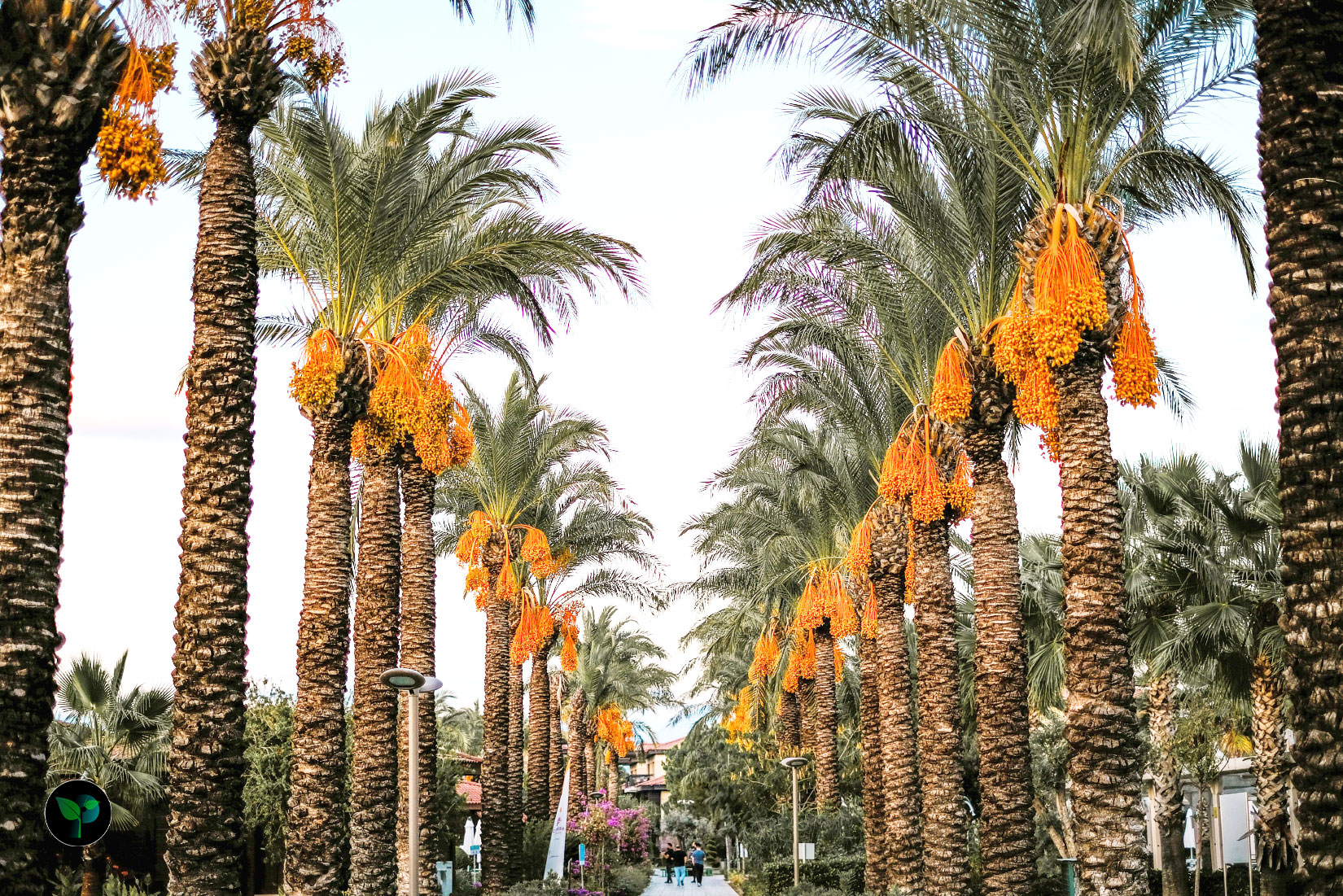Hello plant enthusiasts and nature admirers! Step into a lush oasis of botanical wonders as we delve into the intriguing realm of these plants in our latest post on “Different Types of Palm Plants.” In this post of Plants Folder, we’re embarking on a captivating journey through the diverse and enchanting world of this plant, exploring a myriad of species that grace our landscapes with their tropical elegance and unique characteristics.
What is a palm plant?
Variety: They belong to the botanical family Arecaceae, encompassing over 2,500 species known for their distinctive tropical appearance and graceful fronds.
Appearance: These plants are characterized by their tall, slender trunks topped with lush, spreading leaves that can vary from fan-shaped to feather-like.
Habitat: They are native to tropical and subtropical regions worldwide, thriving in warm climates with abundant sunlight and well-drained soil.

Cultivation Tips
Light: They generally thrive in bright, indirect light but can adapt to different light conditions.
Watering: Allow the soil to dry slightly between waterings to prevent root rot, as overwatering can be detrimental.
Temperature: Most of them prefer warm temperatures and high humidity, ideal for tropical and subtropical climates.
What are the different types of Palm plants?
When it comes to these plants, the diversity is truly astounding! Here are some common types of these plants that you might encounter:
1. Areca (Dypsis lutescens)
– Known for its feathery, arching fronds and golden cane-like stems.
– Popular choice for indoor decoration due to its elegant appearance and air-purifying qualities.
2. Date Palm(Phoenix dactylifera)
– Famous for producing sweet and nutritious dates.
– Iconic palm tree with a slender trunk topped by a crown of large, pinnate leaves.
3. Windmill (Trachycarpus fortunei)
– Cold-hardy palm species with fan-shaped leaves.
– Ideal for adding a tropical touch to gardens in cooler climates.
4. Queen (Syagrus romanzoffiana)
– Graceful palm with elegant arching leaves.
– Often used in landscaping for its beauty and resilience.
5. Coconut (Cocos nucifera)
– Symbol of tropical paradise, producing coconuts for food and water.
– Tall plant with a smooth trunk and large, pinnate leaves.
6. Parlor (Chamaedorea elegans)
– Compact palm ideal for indoor spaces.
– Features delicate, thin stems and clusters of small, dark green leaves.
7. Kentia (Howea forsteriana)
– Tall and graceful one is known for its elegant arching fronds.
– Thrives indoors or in shady outdoor locations.
8. Sago (Cycas revoluta)
– Not a true palm but often mistaken for one.
– Cycad species with a unique appearance and sturdy, feather-like fronds.
9. Christmas (Adonidia merrillii)
– Compact this with a slender trunk and bright red fruits.
– Popular for landscaping and festive decorations due to its colorful appearance.
10. Foxtail (Wodyetia bifurcata)
– Distinctive palm with a bushy crown of feathery fronds resembling a fox’s tail.
– Adds a tropical flair to gardens and landscapes.
These are just a few examples of the diverse plants that grace our landscapes, homes, and imaginations. Each palm species brings its unique characteristics and beauty, making them a beloved choice for both indoor and outdoor greenery enthusiasts. So, whether you’re dreaming of a lush tropical paradise or a serene indoor oasis, there’s a plant out there waiting to adorn your space with its exotic charm!
Uses
This plant, with its versatile nature, offers a wide range of uses and benefits to both humans and the environment. Let’s explore some of the key uses and advantages of these plants:
Ornamental Purposes
They are commonly used for landscaping in gardens, parks, and public spaces due to their aesthetic appeal and tropical charm.
Food Source
Several palm species produce fruits that are edible and nutritious, such as coconuts, dates, and acai berries.
Economic Value
Palms like the oil palm (Elaeis guineensis) are extensively cultivated for their oil, used in cooking, cosmetics, and biofuel production.
Traditional Medicinal Uses
Parts of some of these plants are used in traditional medicine for various purposes, such as treating skin ailments and digestive issues.
Construction Material
Its wood is used in construction for making furniture, flooring, and even traditional housing in some cultures.
Benefits
Air Purification: Some palm species, like the Areca Palm, are effective air purifiers, removing toxins and improving indoor air quality.
Carbon Sequestration: these plants, like other plants, absorb carbon dioxide during photosynthesis, helping to mitigate climate change by sequestering carbon.
Erosion Control: The extensive root systems them help prevent soil erosion, especially in coastal regions and areas prone to landslides.
Habitat for Wildlife: They provide habitat and food for various wildlife species, contributing to biodiversity conservation.
Cultural Significance: They have cultural and religious significance in many societies, symbolizing resilience, peace, and victory.
Industrial Applications
Palm Oil Production: This is a major source of palm oil, widely used in the food industry, cosmetics, and biofuels.
Ecological Importance
Ecosystem Support: They are essential components of many tropical ecosystems, providing food and shelter for numerous species of animals and plants.
Whether adding a touch of greenery to your living space, enjoying the sweet taste of coconut water, or contributing to sustainable palm oil production, palm plants play a significant role in our lives and the environment. By appreciating and utilizing the diverse uses and benefits of palm plants, we can foster a deeper connection with nature and promote the well-being of both ourselves and the planet



Leave a Reply